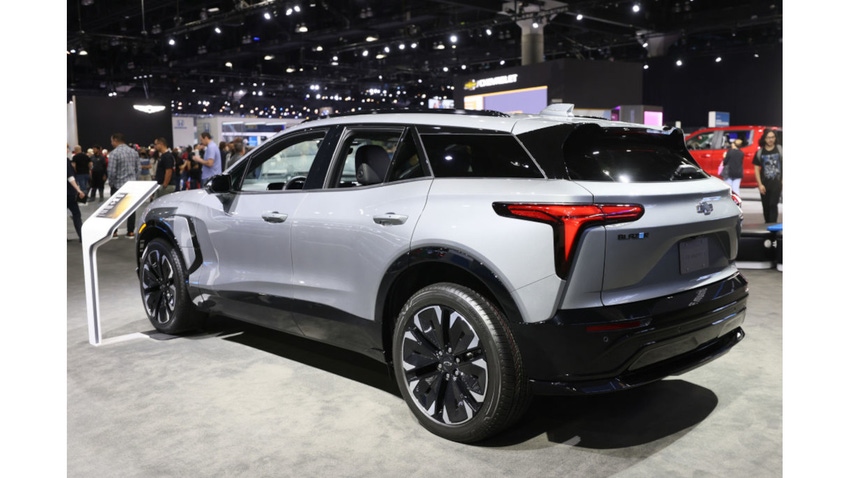Sales falling short of lofty forecasts amidst concerns about prices, charging issues.

At a Glance
- Wards Intelligence analyst Adam Ragozzino said EV sales, despite rising, have failed to meet original goals from automakers
- Prices of most electric vehicles exceed $40,000, too costly for average consumers
- EV charging infrastructure is increasing but remains unevenly distributed.
Last April, I digitally penned a commentary about the hurdles of owning and maintaining an electric vehicle in my hometown, New York City. I cited the dearth of charging infrastructure, particularly within a short instance of my house, and questioned the ability of my 70-year-old home’s current electric network to accommodate an EV without some possibly costly modifications.
Ten months later, it turns out my concerns remain hurdles in EV adoption. During a recent session at the DesignCon show in Santa Clara, Adam Ragozzino, Principal Analyst for Batteries and Electric Powertrains at Wards Intelligence, noted that while sales of electric vehicles continue rising, they have fallen short of ambitious forecasts from several years ago.
First, the good news: Ragozzino said that electric vehicle sales continue rising, in November alone topping the million mark, reaching 1.1 million. Tesla continues to be the sales leader, with Ford, Chevy, Hyundai, and Mercedes trailing distantly.
But there’s a major bump in the road, according to Ragozzino. “Expectations have not been met,” he said. Ragozzino noted that General Motors projected to sell a million battery-electric vehicles annually by 2025, but sold only 75,000 in 2023─half of original expectations. “The Ultium joint venture with LG has been slow to ramp up due to automation issues,” said Ragozzino. He added that General Motors has temporarily stopped selling the electric vehicle version of its Blazer SUV due to battery, software, and other issues.
To get its EV program back on track, GM has hired Kurt Kelty, former director of battery technology at Tesla, to be its vice president of battery. Kelty is tasked with streamlining the company’s EV battery supply chain, from raw materials to production, to help the struggling automaker attain its EV sales goals.
GM is not the only automaker whose EV expectations have not been met. Ragozzino noted that in 2022, Ford had raised EV investment to $50 billion, intending to build 2 million EVs annually by 2026 through an ambitious expansion program. “But now, Ford has delayed $12 billion of its EV investment and has also cut back production of its F-150 Lightning truck.
High Prices Remain Hurdle
There’s a big reason why EV sales have fallen short of expectations: price. “The national median household income in the U.S. is $74,580. “But there are only three EV models that are priced under $30,000, including Nissan’s Leaf and the Chevrolet Bolt,” Ragozzino said. Chevrolet last year announced it would discontinue selling the Bolt, but subsequently said it would redesign it as a new model.
The bottom line, according to Ragozzino, is that EVs are a viable option for wealthy households, as 36% of U.S. sales last year were in battery-electric vehicles. But overall, battery-electric vehicles comprised just 2 to 3% of total vehicle sales.
Charging Infrastructure Slowly Ramping
Ragozzino also said that the availability of charging stations remains uneven throughout the U.S. He cited statistics showing the U.S. now has under 9,800 fast charging stations with over 39,800 charging ports. A majority of them are on Tesla’s supercharging network. By contrast, Ragozzino said China has over 1 million charging ports, with over half of them fast DC charging.
Despite growing pains, efforts continue to increase EV production, starting with an increase in available cells. Ragozzino projected the U.S. to have over 1 terawatt of EV cell capacity by 2025, amounting to a 26% share of total EV cell capacity. On top of this, there are ongoing efforts to increase the availability of lower-priced EVs, such as Volvo’s EX30 according to Ragozzino.
Thousands for a Replacement Part
As EVs increase in usage and start piling on miles, concerns grow about maintaining and repairing them. During the session Q&A, one audience member, a Tesla EV owner, noted that one failed component would cost thousands of dollars to replace. Another audience member added that many auto mechanics are either unqualified or simply do not want to service EVs.
Also raised during the Q&A was the lingering concern over battery fires. Ragozzino said one possible long-term solution would be using a solid-state electrolyte, but more R&D would be required to make it practical.
About the Author(s)
You May Also Like





